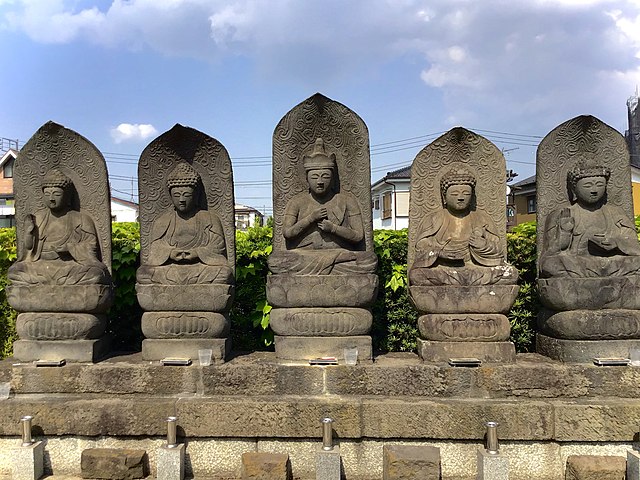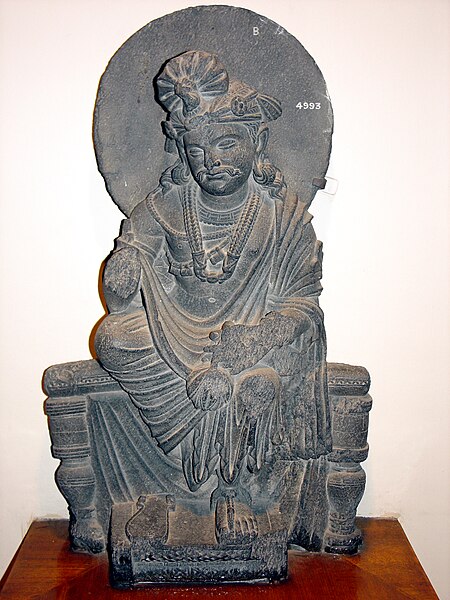Nāgārjuna [c. 150 – c. 250 CE (disputed)] was an Indian Mahāyāna Buddhist philosopher monk of the Madhyamaka school. He is widely considered one of the most important Buddhist philosophers. Jan Westerhoff considers him to be "one of the greatest thinkers in the history of Asian philosophy."
Painting of Nāgārjuna
A model of the Amaravati Stupa
A Tibetan depiction of Nagarjuna; the snakes are depicted as protectors around Nagarjuna's head and the nagas rising out of the water are offering Buddhist sutras.
Nicholas Roerich "Nagarjuna Conqueror of the Serpent" (1925)
Mahāyāna is a term for a broad group of Buddhist traditions, texts, philosophies, and practices developed in ancient India. It is considered one of the three main existing branches of Buddhism, the others being Theravāda and Vajrayāna. Mahāyāna accepts the main scriptures and teachings of early Buddhism but also recognizes various doctrines and texts that are not accepted by Theravada Buddhism as original. These include the Mahāyāna sūtras and their emphasis on the bodhisattva path and Prajñāpāramitā. Vajrayāna or Mantra traditions are a subset of Mahāyāna which makes use of numerous tantric methods Vajrayānists consider to help achieve Buddhahood.
An illustration in a manuscript of the Aṣṭasāhasrikā Prajñāpāramitā Sūtra from Nalanda, depicting the bodhisattva Maitreya, an important figure in Mahāyāna
The Five Tathāgatas in Shishoin Temple (Tokyo). A unique feature of Mahāyāna is the belief that there are multiple Buddhas which are currently teaching the Dharma
Mahāyāna Buddhist triad, including Bodhisattva Maitreya, the Buddha, and Bodhisattva Avalokiteśvara. 2nd–3rd century CE, Gandhāra
Seated Avalokiteshvara bodhisattva. Gandharan, from Loriyan Tangai. Kushan period, 1st – 3rd century CE. Indian Museum, Calcutta








